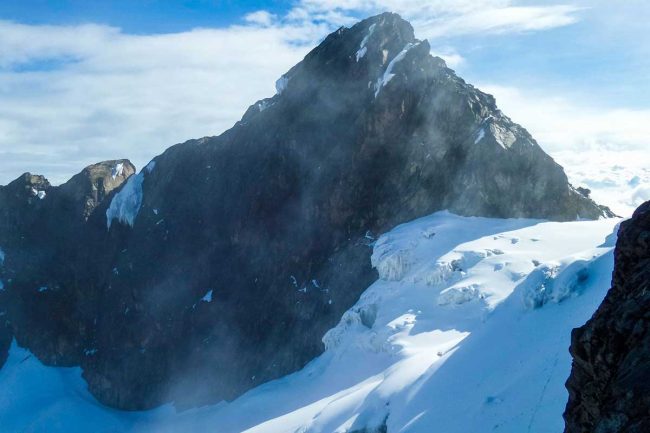Mountain Rwenzori is located in the southwestern district of Kasese in the Mountain Rwenzori National Park. With an elevation of 5,109 meters above sea level, it is the highest point in the country and the third highest in Africa. Mountain Rwenzori National Park was established in 1991 and declared a UNESCO site in 1994. The park has a rich biodiversity of flora and fauna species for visitors to explore. These include wildlife species like the unique three-horned chameleons, black and white colobus monkeys, and forest elephants.
Cost of Hiking Mount Rwenzori and What to Pack
As per the June 2024/26 UWA tariffs, Mountain Rwenzori hiking fees are USD 50. Foreign residents pay a discounted price of USD 40 and East African residents UGX 50,000. The fee is per day and includes entrance fee and payment to rangers. Transport to the park, meals, porter fee, special accommodation, and any other activities are excluded from this fee. By hiking, you become a major contributor to the existence of diverse wildlife. There are some essential things to pack when embarking on this hike. These include the following among others gumboots, a climbing harness, sleeping bags, sunscreen, a camera, raincoat, crampons, ice axes, and personal effects.
The summit hiking trails
The central circuit
This is the very first and primary hiking trail at Mount Rwenzori National Park in the east. It is the shortest and most comfortable route to the summit. It starts at Mihunga Gate 1,651 meters through to about 5 different vegetation patterns. These include Nyabitaba, John Matt, Bujuku, Scott Pass, Kitandara Lake and Guy Yeoman to the snowcapped Margarita Peak at 5109 meters. The route also leads to Mount Baker, Stanley, Speke, and Weismann Peak and is managed by Rwenzori mountaineering services. Trekkers follow a lush forest cover and bushes home to the three-horned chameleons, black and white colobus monkeys. Its also a habitat for Rwenzori Turacos, barred long-tailed cuckoos, handsome francolin, forest elephants, hyrax, and L’hoest monkeys among others. The hike to the summit takes about 5-7 days, depending on one’s speed, physical fitness, and the preference of the mountaineers.
Kilembe circuit
This is one of the busiest routes in Mount Rwenzori. The circuit is in the southern part of the mountain and trekkers pass through Shine Hut at 2585m, Kalalama Hut at 3147m, Mutinda Hut at 3688m, Bugata camp at 4062m to Margherita summit at 5109m. They established the circuit in 2009 as an alternative route. The first known hiker to use this route was Professor Scott Elliot in 1895. He however didn’t reach the snowcapped summit. Rwenzori trekking services are in charge of the trail. Ascending and descending to the summit takes about 7-8 hours, through about three vegetation zones notably bamboo, alpine, and giant lobelias.
Bukurungu wilderness circuit
The Bukurugu wilderness circuit was created in 2015 after Kilembe and the central circuit and managed by both the Uganda Wildlife Authority and the local communities. The nights through this circuit are on camps. The route starts from Kasanzi gate through Rwigho camp at 2650m, Kambeho camp (3700m), Mughuli camp (3877m), Lake Bukurungu camp (4291m), Irine Lake camp (4495) to the summit at 5109m above sea level. It takes about 7-8 days to ascend and descend this circuit. Few adventurers use it, yet it offers thrilling experiences, including lucky encounters with sought-after primates, mountain summits, lush vegetation, lakes, and more
Best Time to Visit Mount Rwenzori and where to stay
Mountain hiking can take place any time of the year depending on how ready one is. However, we recommend the months of December to March and June to September when there is low or no rain. During this time, the hiking trails are dry and very easy to maneuver hence favoring the hiking experience. The lodging options while hiking are often campsites one sets depending on the route used, or the huts at the designated circuits.
In conclusion, Mount Rwenzori is one of the tallest standalone mountains in Africa. Hiking to its summit takes approximately 7-10 days. The experience offers view of lakes, water streams, plantations, distant mountains, and lots more. The trek to its snow-capped summit is less strenuous, and there is a majority of hiking success registered. Even non-experienced hikers can get to the summit through any of the hiking routes. Additionally, visitors to the park can also visit the communities such as the Bakonjo living outside the park for cultural entertainment.

